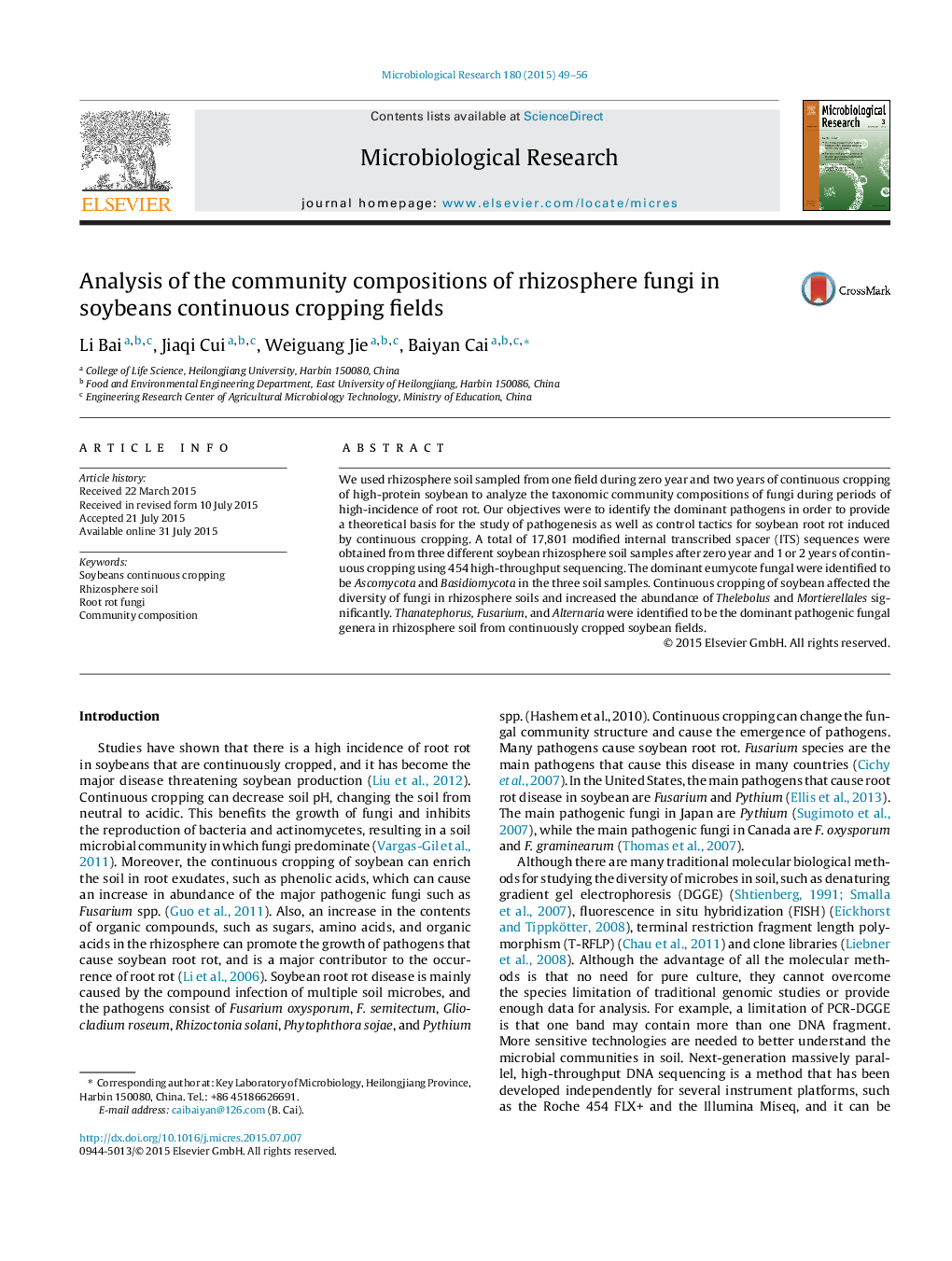| کد مقاله | کد نشریه | سال انتشار | مقاله انگلیسی | نسخه تمام متن |
|---|---|---|---|---|
| 2091973 | 1545992 | 2015 | 8 صفحه PDF | دانلود رایگان |
We used rhizosphere soil sampled from one field during zero year and two years of continuous cropping of high-protein soybean to analyze the taxonomic community compositions of fungi during periods of high-incidence of root rot. Our objectives were to identify the dominant pathogens in order to provide a theoretical basis for the study of pathogenesis as well as control tactics for soybean root rot induced by continuous cropping. A total of 17,801 modified internal transcribed spacer (ITS) sequences were obtained from three different soybean rhizosphere soil samples after zero year and 1 or 2 years of continuous cropping using 454 high-throughput sequencing. The dominant eumycote fungal were identified to be Ascomycota and Basidiomycota in the three soil samples. Continuous cropping of soybean affected the diversity of fungi in rhizosphere soils and increased the abundance of Thelebolus and Mortierellales significantly. Thanatephorus, Fusarium, and Alternaria were identified to be the dominant pathogenic fungal genera in rhizosphere soil from continuously cropped soybean fields.
Journal: Microbiological Research - Volume 180, November 2015, Pages 49–56
